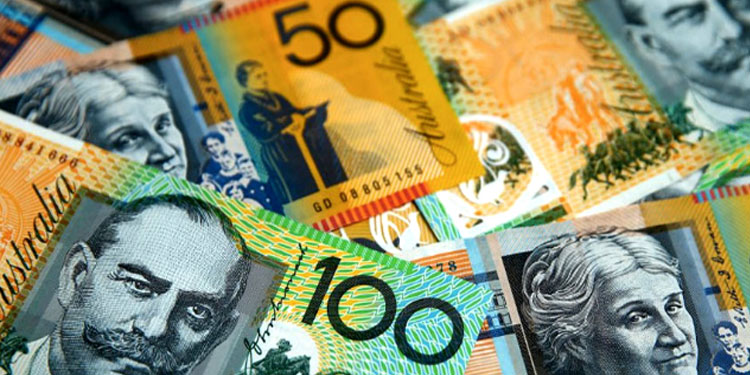Karachi/Sydney, July 26, 2025 – The Australian Dollar (AUD) has reached a new peak against the Pakistani Rupee (PKR), climbing to 188.25 PKR as of 6:34 PM PKT on July 26, 2025, according to the latest forex market updates.
1 AUD= 188.25 PKR
This marks a continued upward trend from earlier this month, with the AUD valued at 187.00 PKR on July 3, 186.71 PKR on July 1, 183.67 PKR on June 21, and 183.36 PKR on June 18. The currency has seen a dramatic recovery from a surprising low of 83.00 PKR on June 24, a figure that analysts attribute to potential market anomalies or speculative trading. The AUD started June 2025 at a strong 180.00 PKR, underscoring its robust performance throughout the month.
CURRENCY RATES TODAY IN PAKISTAN- LIVE
Valuation Criteria
The valuation of the AUD against the PKR is driven by a confluence of global and domestic economic factors. Australia’s economy, a powerhouse in commodities like iron ore, coal, and liquefied natural gas, benefits significantly from rising global demand, particularly from Asia-Pacific markets such as China and India. The Reserve Bank of Australia’s steady monetary policy, including its cautious approach to interest rate adjustments, has maintained investor confidence in the AUD, positioning it as a stable currency in turbulent global markets. Additionally, Australia’s strong trade surplus and resilient economic growth contribute to the AUD’s appreciation.
In contrast, the Pakistani Rupee faces persistent challenges due to structural economic issues. High inflation, a widening trade deficit, and limited foreign exchange reserves have weakened the PKR, with the State Bank of Pakistan struggling to stabilize the currency through interventions and policy measures. External debt obligations and reliance on imports for energy and consumer goods further exacerbate the PKR’s vulnerability. The sharp dip to 83.00 PKR on June 24 puzzled analysts, with some speculating it was driven by temporary market disruptions or speculative short selling, though the subsequent rebound to 188.25 PKR suggests a correction fueled by renewed demand for the AUD.
Global factors, such as fluctuations in the US dollar and shifts in commodity prices, also influence the AUD-PKR exchange rate. Interest rate differentials play a critical role, as Australia’s relatively higher rates attract capital inflows, while Pakistan’s high inflation erodes the PKR’s purchasing power. Geopolitical stability in Australia, contrasted with ongoing economic and political challenges in Pakistan, further tilts the currency balance in favor of the AUD. The sustained climb from early June’s 180.00 PKR to today’s 188.25 PKR reflects these dynamics, with market sentiment favoring the Aussie dollar.
Impact
The AUD’s surge to 188.25 Pakistani Rupee has far-reaching implications for Pakistan’s economy and its citizens. For Pakistani importers, the rising cost of the AUD translates to higher prices for Australian goods, including agricultural products like wheat, dairy, and meat, as well as industrial machinery and educational services, which are popular among Pakistani students pursuing higher education in Australia. This could intensify inflationary pressures in Pakistan, where households are already grappling with rising costs of essential goods and services. Small and medium-sized enterprises reliant on Australian imports may face squeezed profit margins, prompting some to explore alternative suppliers in countries with weaker currencies.
Conversely, Pakistani exporters, particularly in textiles, leather, and agricultural products, stand to benefit from the higher PKR returns when trading with Australia. This could enhance their competitiveness in the Australian market, potentially boosting export revenues and supporting Pakistan’s balance of payments. However, the volatility in the AUD-PKR pair, exemplified by the June 24 dip, poses risks for businesses reliant on stable exchange rates, necessitating robust hedging strategies to mitigate currency fluctuations.
For forex traders and investors, the AUD’s upward trajectory offers opportunities for profit but also underscores the need for caution in a volatile market. The dramatic swings observed in June highlight the potential for high returns, but also the risks of sudden reversals. Remittances from the Pakistani diaspora in Australia, a vital lifeline for many families, are expected to see increased value in PKR terms, providing economic relief to households and potentially stimulating local consumption. However, businesses with AUD-denominated debts or contracts may struggle to meet payment obligations, prompting calls for financial instruments like forward contracts to manage exchange rate risks.
On a macroeconomic level, the AUD’s strength could prompt Pakistan to reassess its trade and monetary policies. Diversifying trade partners, securing additional foreign aid, or negotiating currency swap agreements could help stabilize the PKR and reduce reliance on volatile exchange rates. For Australia, the stronger AUD enhances its purchasing power in Pakistan but may challenge Australian exporters targeting price-sensitive markets. Bilateral trade discussions between the two nations may gain urgency to address these imbalances.
About AUD and PKR
The Australian Dollar (AUD), affectionately known as the “Aussie,” is the official currency of Australia and its external territories, including Christmas Island, Cocos (Keeling) Islands, and Norfolk Island. Managed by the Reserve Bank of Australia, the AUD is one of the world’s top-traded currencies, valued for its stability and close linkage to Australia’s resource-driven economy. Its performance is often tied to global commodity prices, particularly for iron ore, coal, and natural gas, as well as economic developments in the Asia-Pacific region.
The Pakistani Rupee (PKR) is the official currency of Pakistan, introduced in 1948 following the country’s independence. Overseen by the State Bank of Pakistan, the PKR is subject to fluctuations due to Pakistan’s economic challenges, including high inflation, a reliance on imported goods, and external debt pressures. The currency’s value is influenced by domestic monetary policies, global economic trends, and geopolitical factors, making it a volatile player in the forex market.


Leave a Comment